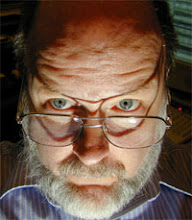Photographers refer to boring light as "high noon fourth of July" because it's hard to find light that's more bland. I missed the fourth by a few days (it's July 7) but I have some photos with light that isn't bland because I headed out before 6am and went out again at 7pm.
Light can be tricky early or late because you'll encounter extremes that are beyond the camera sensor's ability to record. Around 6:30am, I was behind Thomas Worthington High School, pointing my tripod-mounted camera east as the sun rose above the horizon. Early-morning fog was still on the ground. Here's what the camera saw:

Not very usable, is it? The sky and the sun have a bit of detail, but the trees are down in the mud. I can try adjusting the exposure to get some detail in the trees:

So now we have some detail on the ground, in the trees, and we can see the fog. But the sun is blown out. It's time to combine the two images.

The fog is visible. The sun is visible. There's some detail in the trees. The grass is visible. This is a Photoshop trick that combines the two previous images in a way that keeps both the highlights and the darker areas of the images within the range of what the screen can reproduce. If you want to do this, you'll need to have a tripod so that you can record two images that have exactly the same point of view. After that, it's easy: stack the two images and apply a transparency mask to one of them.
Later in the day ...
I returned to the same location later, but pointed the camera a different direction when I noticed two bike riders on the bike trail.

Yes, that's not a bad image because the light is dramatic, but the composition could be improved.

